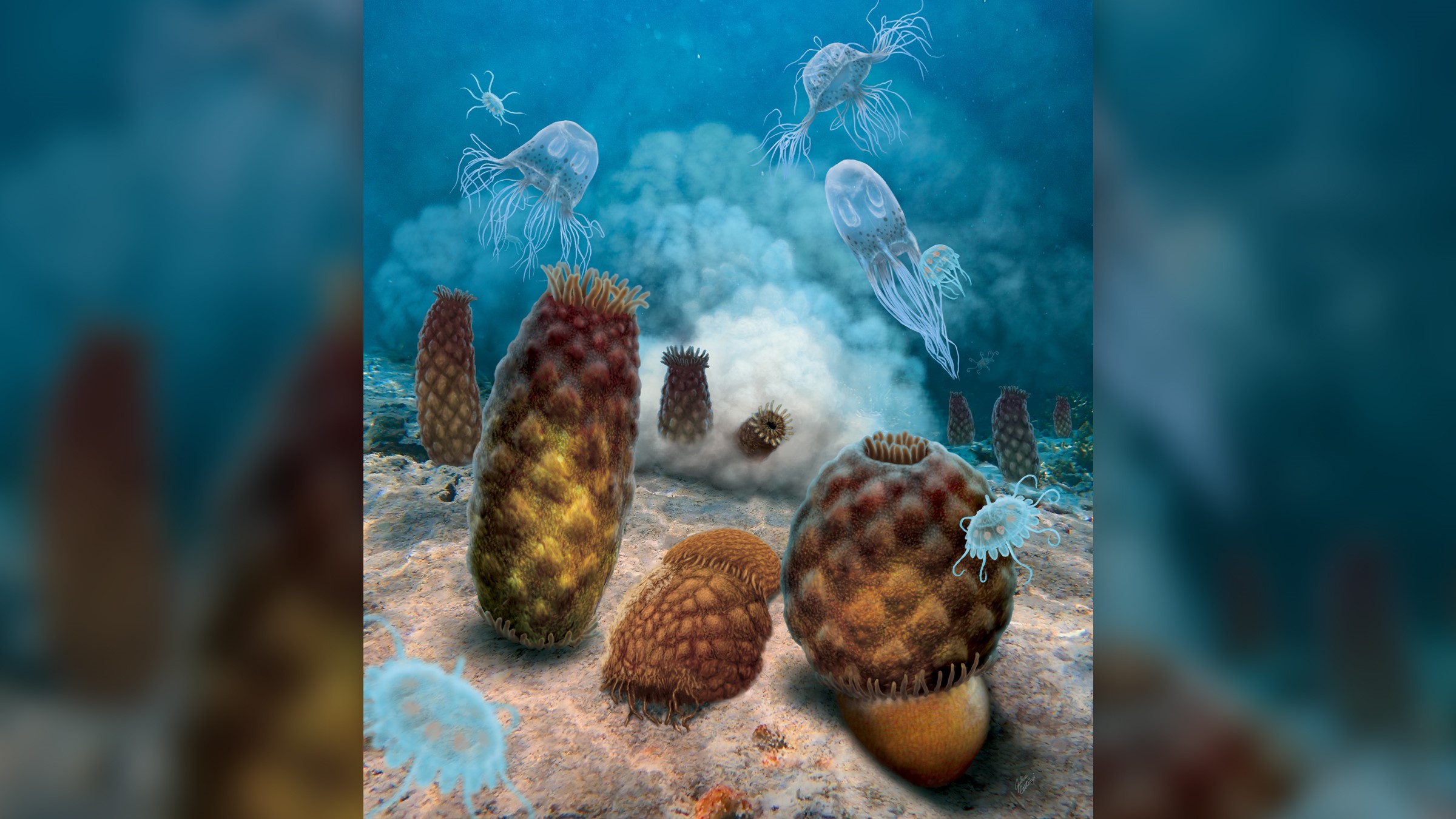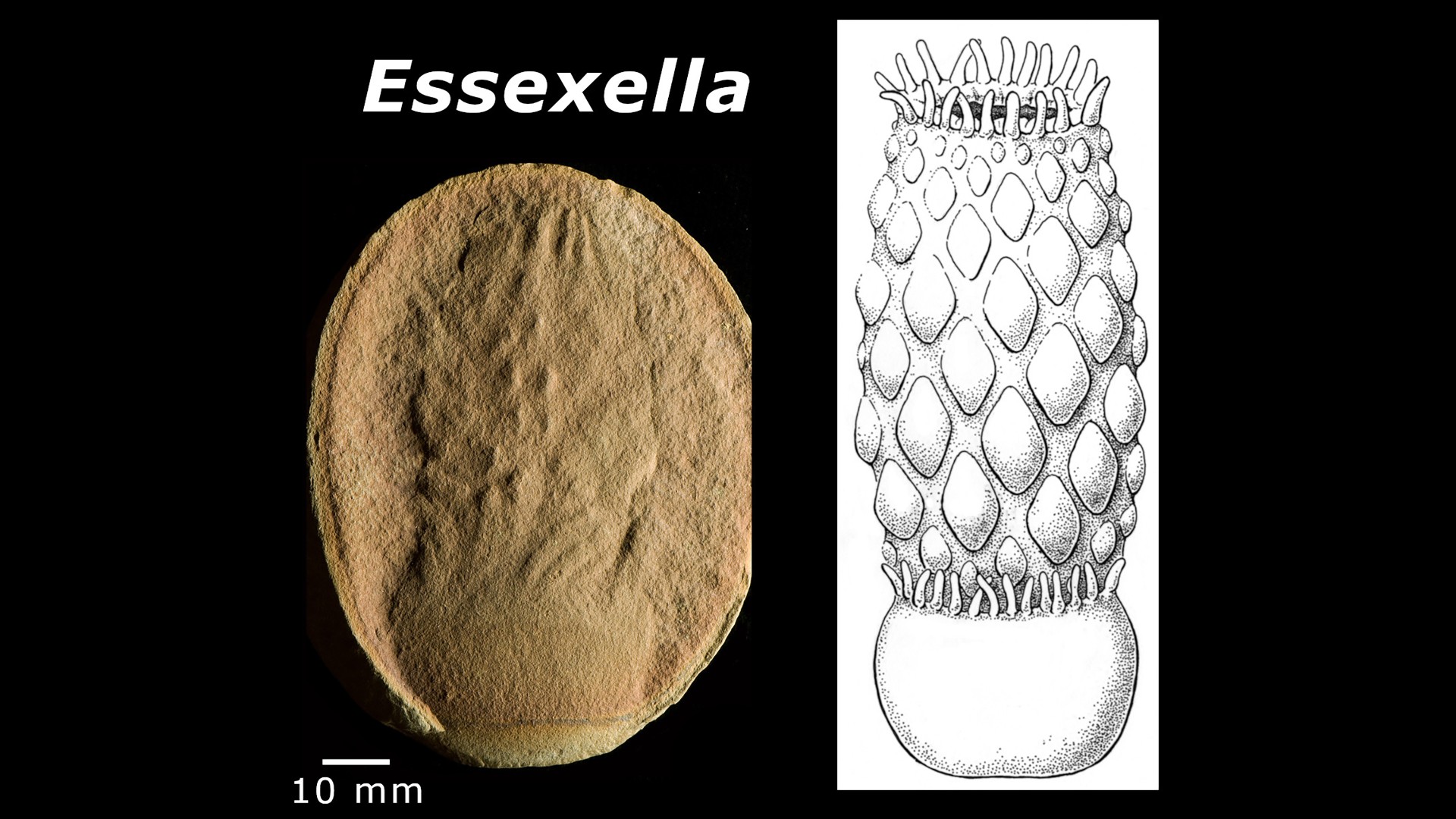Oops, this 300 million-year-old 'blob' fossil was upside down. It's not a jellyfish after all.
Famous 'jellyfish' fossil from 300 million years ago was upside-down the whole time. It's actually another animal entirely.

Often, a discovery isn't so much about gathering new information as it is about looking at something from a new perspective. That's not always simple — except in the case of a newly described fossil sea anemone, when it was as simple as turning a presumed jellyfish fossil upside down.
The fossil, first described in 1971, is famous in both scientific and amateur paleontology circles for being such an easy to find fossil, despite totally lacking a skeleton. But it turns out, the story of the creature was a bizarre case of mistaken identity, scientists reported in a study published March 8 in the journal Papers in Paleontology.
The Mazon Creek fossil beds in Illinois, which formed 309 million years ago, capture a glimpse of water-dwelling species that lived during the warm, wet Carboniferous period (358.9 million to 298.9 million years ago). At that time, the area was an estuary, where silty fresh water from a river flowed into an ocean that covered much of modern-day North America. When plants and animals died in this estuary, often they would be quickly covered in sediment, which led to the impeccable fossilization of not only animal skeletons but also soft-bodied animals, like jellyfish, that typically don't fossilize well.
That's why Mazon Creek is so remarkable. "These fossils are better preserved than Twinkies after an apocalypse," study co-author James Hagadorn, an expert on unusual fossil preservation at the Denver Museum of Nature and Science, said in a statement. "In part that's because many of them burrowed into the seafloor as they were being buried by a stormy avalanche of mud." The most common fossil found at Mazon Creek is that of a bizarre jellyfish called Essexella asherae but more casually referred to as "the blobs" by the amateur fossil hunters who have historically collected them as souvenirs.
But in 2016, Roy Plotnick, a professor emeritus of invertebrate paleobiology and paleontology at the University of Illinois Chicago, noticed that something seemed off about E. asherae.
Related: 520-million-year-old sea monster had 18 mouth tentacles
"I've always looked at these jellyfish fossils and I've thought, 'That doesn't look right to me,'" Plotnick, lead author of the new study, told Live Science. That lingering hunch led Plotnick to invite Hagadorn and Graham Young, curator of geology and paleontology at the Manitoba Museum in Canada, to reexamine the thousands of E. asherae fossils held at the Field Museum in Chicago as well as other museums and private collections.
Get the world’s most fascinating discoveries delivered straight to your inbox.
Plotnick told Live Science that Young and Hagadorn are experts in jellyfish fossils and their preservation, so if anybody had a chance of making sense of these creatures, it would likely be them.
E. asherae looks downright bizarre compared with a stereotypical jellyfish, or medusa, which many envision as a mushroom-like cap that looks to be molded out of petroleum jelly with trailing, party-streamer-like tentacles. But not E. asherae. Fossils suggest that instead of sporting delicate tentacles underneath the cap, E. asherae rocked a membranous skirt, which would make it unique, especially among modern jellyfish, all of which swim around unskirted.
E. asherae's true nature was revealed when Plotnick and colleagues noticed that the cap didn't look like a cap at all. Instead, it resembled the muscular foot that many sea anemones use to burrow into the sea floor.
"I said, 'Wait a minute; that looks like the foot of a sea anemone,'" Plotnick said. When he flipped the specimen over, he had an epiphany: E. asherae wasn't a jellyfish at all. It was a bulbous sea anemone that anchored itself to the seafloor with its muscular foot. At the risk of oversimplification, anemones are relatives of jellyfish that filter-feed in the water column as opposed to swimming through it.
Further examination revealed that the "skirt" was actually the anemone's barrel-shaped body, with a hole at the top to allow it to suck in water for feeding. Moreover, tiny snails that had fossilized with E. asherae were not the ancestors of modern jellyfish parasites but rather scavengers that were buried while feeding on E. asherae corpses, further separating E. asherae from the jellyfish it was thought to be.
The team's analysis showed that paleontologists hadn't just identified the specimen as the wrong species — they'd also placed it in the completely wrong taxonomic order, the broad grouping above family and species. This means taking the animal out of the order Semaeostomeae, which contains jellyfish, and into the sea anemone order, Actiniaria. It's a big shift that has literally turned our understanding of this common fossil on its head.
Editor's note: Updated at 12:47 p.m. EDT on March 16 to correct Roy Plotnick's title. He is at the University of Illinois Chicago, not the University of Chicago.

Cameron Duke is a contributing writer for Live Science who mainly covers life sciences. He also writes for New Scientist as well as MinuteEarth and Discovery's Curiosity Daily Podcast. He holds a master's degree in animal behavior from Western Carolina University and is an adjunct instructor at the University of Northern Colorado, teaching biology.



